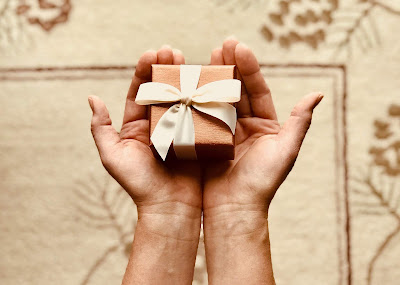Care Packages As Relationship Maintenance
 |
| Photo by Kim Stiver from Pexels |
I have recently been preparing care packages for people in my life for another project I’m working on. I made one for my brother-in-law who just started his first year of college, one for my niece celebrating her birthday away from home, and another for friends who live many states away and just bought their first house. The act of putting together these packages got me thinking about why sending thoughtful correspondence like this matters, and what communication scientists would say about why care packages are a useful relationship maintenance tool.
Relationship Maintenance
All relationships require maintenance. This is especially important for long-distance relationships. Care packages can help maintain a relationship over far distances. Research has shown the importance of maintaining relationships for health and happiness. Relationships that are well maintained are more satisfying. The people in them report higher commitment and like each other more.
Relationship maintenance takes many forms including open communication and assurances or telling a loved one that you care about them. The act of sending a care package communicates not only caring but that you were thinking of the receiver and took time out of your busy life to send them something meaningful. Sending letters containing words of encouragement can communicate emotional support. Sending money or gift cards for restaurants your loved one enjoys or stores you know your loved one needs to buy things from is a form of tangible support. If you include a letter, sharing about your day or week is engaging in open communication which can help you feel closer to those who are far away and can help build and deepen a relationship.
Affection Exchange
Showing support through sending a care package that includes things people want and need can be seen as a form of affection. The exchange of affection can help ward off loneliness. Affection Exchange Theory is an especially useful theory for understanding care packages as a relationship maintenance tool. There are many ways to show affection, and sending someone a care package is one of them. This type of affection is known as indirect nonverbal affection, and, according to Kory Floyd, is a way to show intimacy and is associated with a smattering of positive individual outcomes like less loneliness, higher self-esteem, and lower stress.
Indirect nonverbal affection can be exchanged whenever a person communicates affection through providing social or material support to someone else. Social support might be cheering up a friend when they are down or giving them an ego-boost when they didn’t get a job they wanted. Supportive words like these can be included in a card inside of a care package. Material support could including sending a friend a coffee shop gift card when you know they need the extra energy boost or sending school supplies to a student. Care packages are tools for expressing nonverbal affection to complement verbal support you’ve given over the phone or video chat.
The benefits of affectionate communication aren’t just for the receiver! People who communicate affection regularly are mentally healthier, happier, and more comfortable being close to others.
One of the reasons care packages are so satisfying is that they contain an element of surprise at both receiving the package and uncovering what is inside. Surprise for many is a key component of joy. Care packages also require planning and thoughtfulness. Sending one lets someone know you are thinking of them and is a step toward maintaining the relationship.
Many people in your life could benefit from receiving a care package. Sick or lonely family members, new parents, new homeowners/renters, college students, a friend going through something sad or something happy, and many others would likely appreciate the gesture. Pinterest is overflowing with tips and ideas for care packages for any type of relationship, situation, or time of year.
Do you ever receive or send care packages? If yes, have they improved your relationship with the sender/receiver? Leave a comment below and let me know!
References
Floyd, K., Hesse, C., & Generous, M. A. (2017). Affection exchange theory: A bio-evolutionary look at affectionate communication. In Engaging Theories in Family Communication (pp. 17-26). Routledge.
Stafford, L., Dainton, M., & Haas, S. (2000). Measuring routine and strategic relational maintenance: Scale revision, sex versus gender roles, and the prediction of relational characteristics. Communications Monographs, 67(3), 306-323.